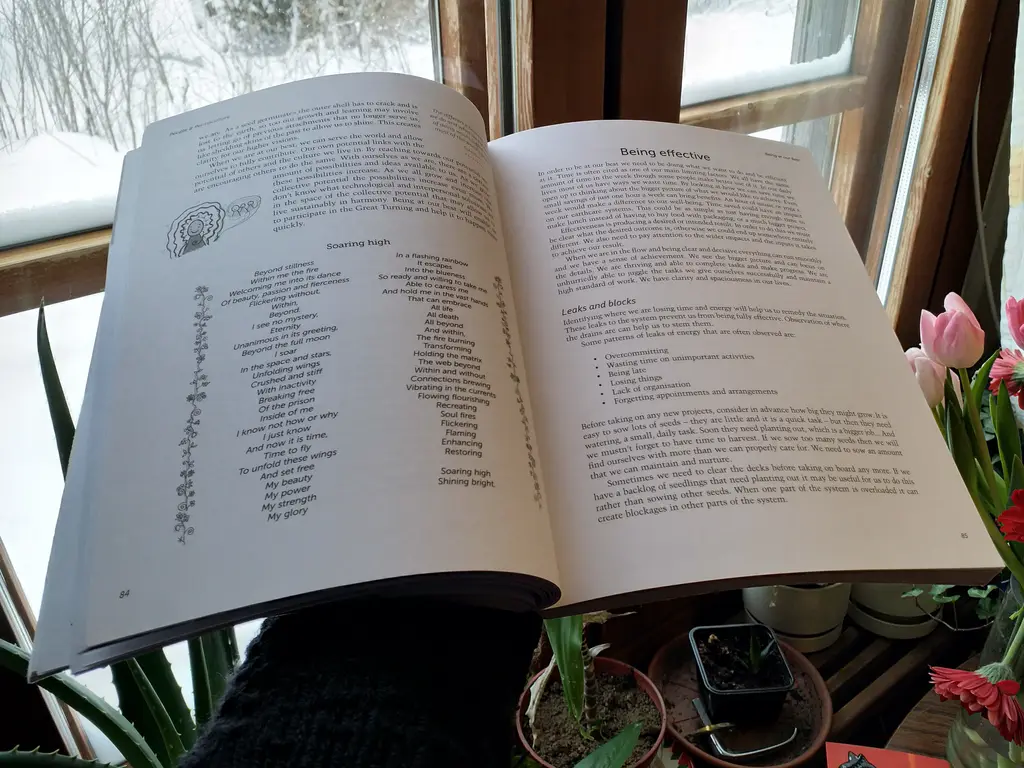"People and Permaculture" by Looby Macnamara is an transformative book that goes beyond traditional permaculture's focus on land and ecology to embrace the human dimension of our ecosystems. I would argue it is the first book of its kind to apply permaculture principles to and concentrate on the human aspect and the people care ethic of permaculture as an area of interest on its own, not only as a ”supporting function”.
The book extends permaculture's scope to our lives, relationships, and societal structures. It offers a framework for self-care and environmental stewardship, making it an invaluable guide for anyone looking to live a more creative, low-carbon life – also those without a garden.
Having read and re-read the book several times in the last years, I found "People & Permaculture" to be eye-opening. It grabs the cultural problem that we have in permaculture (that we bring our old dog-eat-dog way of interacting with people into permaculture and generally apply the ethics and principles only in our gardens, forgetting all other areas of our lives) gently but firmly.
About People & Permaculture
The book, divided into six parts, begins with familiar permaculture principles, but quickly turns personal, urging readers to first address their internal landscape before seeking to change the world.
The parts range from principles and personal well-being to communication in relationships and social systems, and eventually, global connections and future visions. Each section is filled with over 50 practical activities, empowering readers with tools to initiate positive change.
Part 1: 'Thinking Like an Ecosystem' - This section offers a comprehensive introduction to permaculture design and principles, tailored to human contexts. It sets the stage for applying permaculture thinking beyond the environment to our personal lives.
Part 2: 'Looking Deep into the Centre' - Here, the focus shifts inward. It looks into various tools and techniques for personal growth, emphasizing transforming our internal landscape to improve well-being and achieve our fullest potential.
Part 3: 'Hearing Each Other' - This part explores the creation of harmony in our interpersonal relationships and group dynamics. It emphasizes the importance of effective communication and decision-making in fostering collaborative and healthy interactions.
Part 4: 'Living in Society' - The book broadens its lens to examine societal systems, particularly health and education. It provides insights into integrating permaculture principles into these broader social structures.
Part 5: 'Feeling Connected Globally' - Expanding the scope further, this section explores our connection to the global community. It encourages readers to think about their role in the larger world and the impact of their actions on a global scale.
Part 6: 'Sensing Our Futures' - The concluding part of the book is dedicated to envisioning and creating a positive future. It introduces a new design framework specifically developed for people-centered designs, helping readers apply permaculture in a way that shapes a sustainable and hopeful future.
The highlight is of course the Design Web framework, the first design tool in permaculture that was made to cater for people-based designs rather than land-based work. It is an amazing tool, which I use a lot in small and big designs, too.
Conclusion: read this book
Looby's approach is inspired. She skillfully guides the reader from self-improvement to broader societal change, providing an amazing toolkit that includes advice on everything from decluttering to conflict resolution, group work, and envisioning a sustainable future.
What I found most interesting was the shift from a focus on external change to an introspective journey. The book really hones in on the importance of getting ones own life in order before attempting to solve all the problems in the wider world. Starting on your internal backyard, so to say. Or: small and slow solutions.
Looby Macnamara's People and Permaculture is a great first read to expand your understanding of permaculture, if permaculture for you has so far been something that one does in the garden or food forest. Start here if you are looking to create sustainable harmony in every aspect of your life.
It really is a must-read for those interested in truly holistic living and sustainable community building, showing that permaculture is not just about ecological balance, but about nurturing healthy internal landcapes, relationships and communities as well.
Get your copy
The following links are affiliate links - thanks for using them and supporting us!
- Nordics: get People & Permaculture on Adibris




